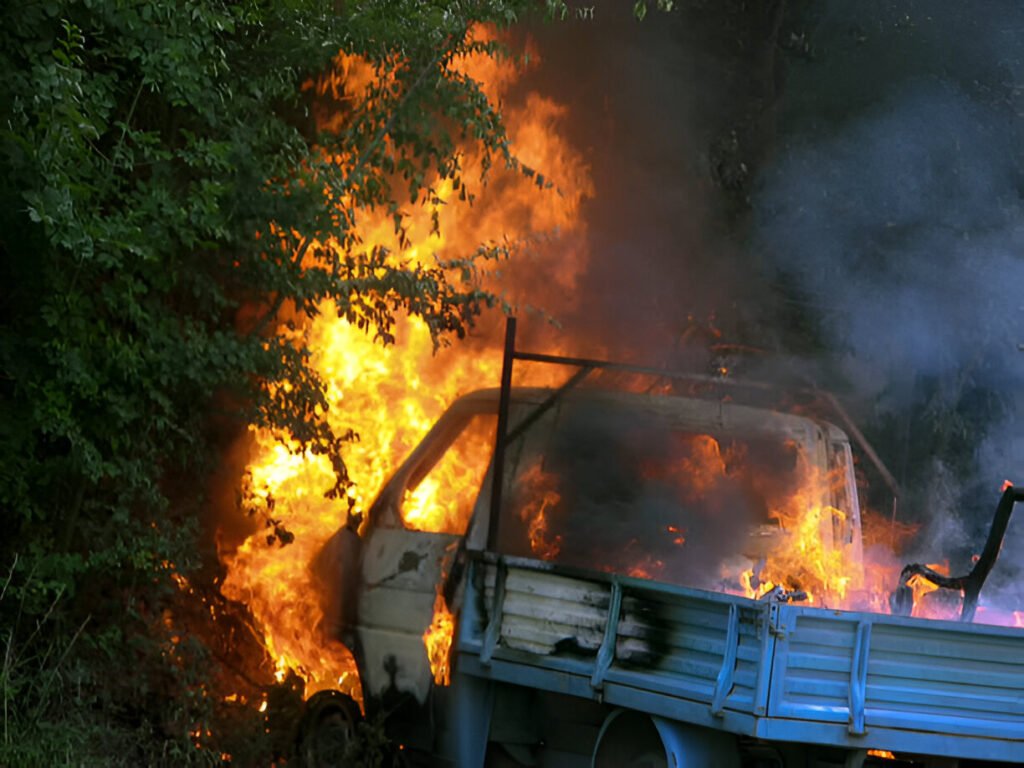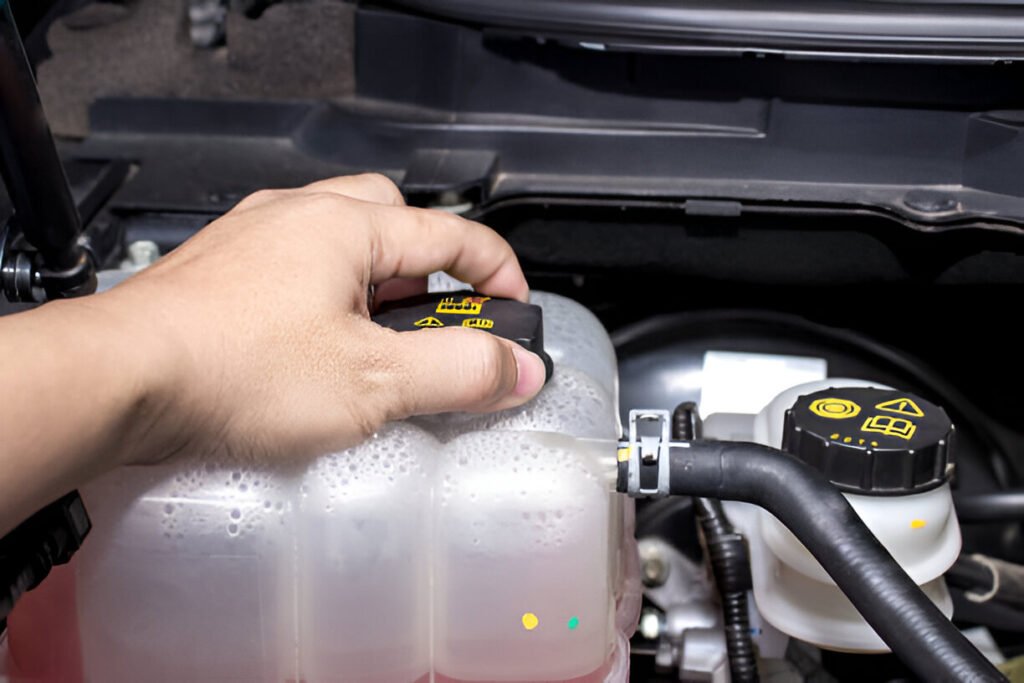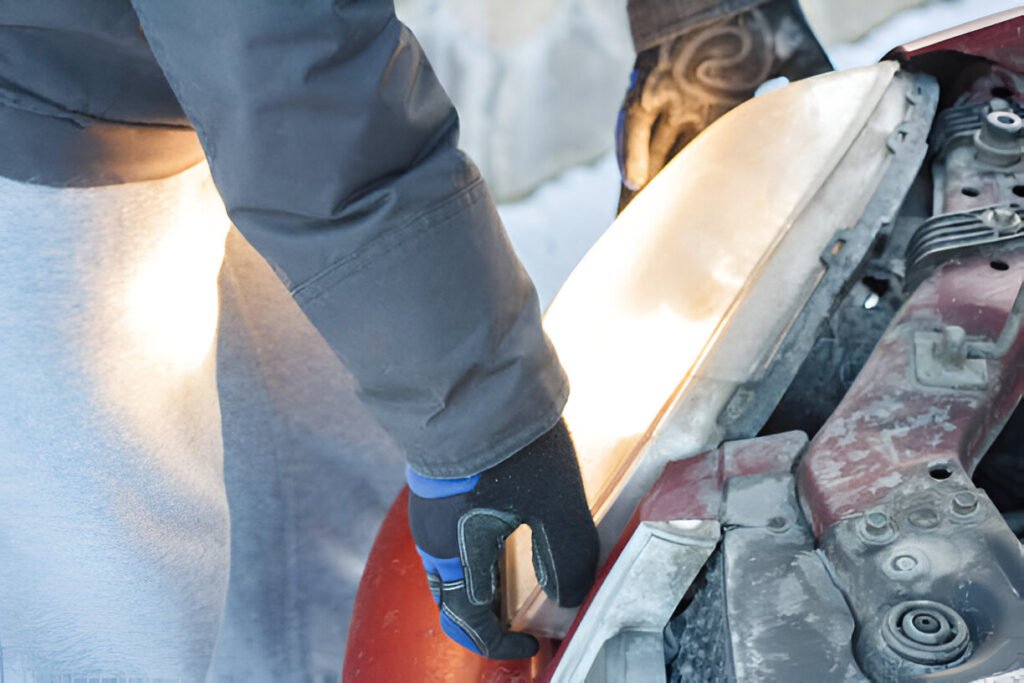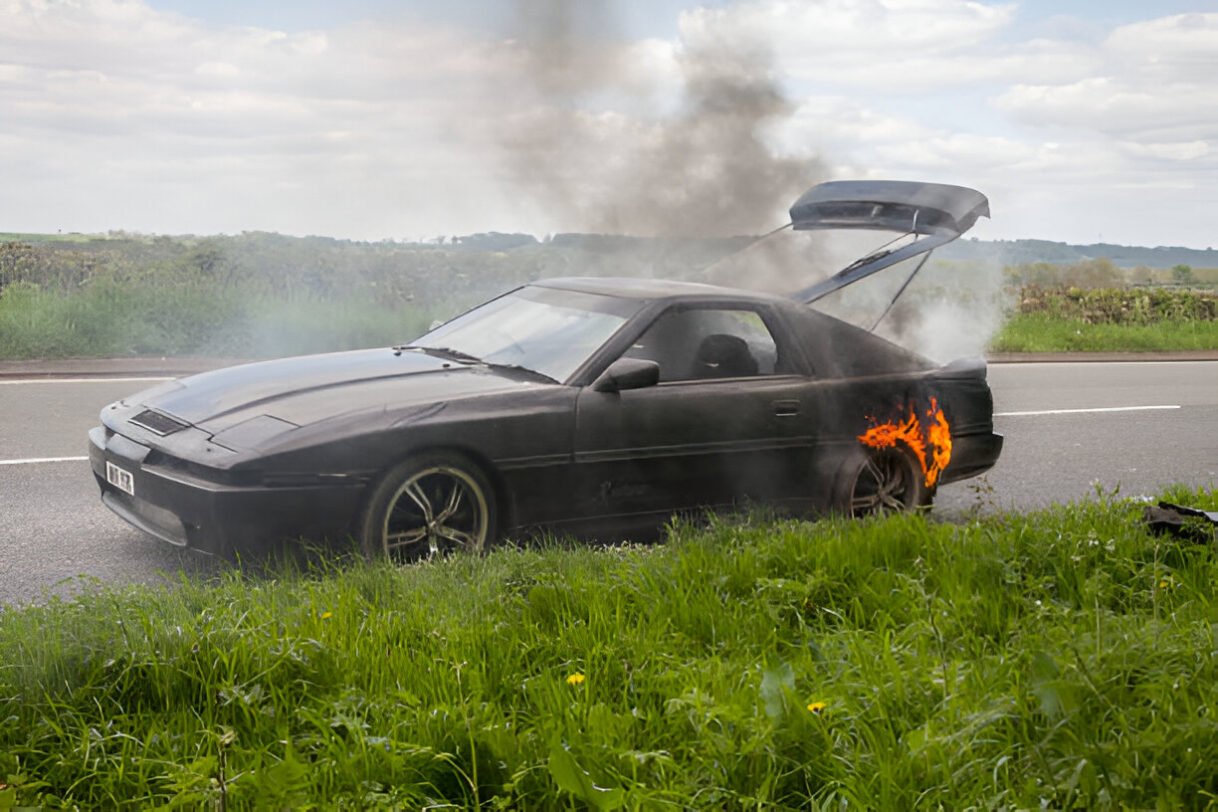Introduction
As temperatures rise during the summer months, so does the risk of car fires. These incidents, while relatively rare, can be devastating when they occur, potentially resulting in severe damage to property and, in worst-case scenarios, loss of life. Understanding the causes of car fires, knowing how to prevent them, and being prepared to respond if one occurs are crucial aspects of summer driving safety.
This comprehensive guide will delve into the various factors that contribute to car fires during the hot summer months, explore preventative measures and solutions, and provide essential tips for drivers to ensure their safety and that of their passengers. By the end of this article, you’ll be equipped with the knowledge to minimize the risk of car fires and handle emergency situations effectively.
Part I: Common Causes of Car Fires in Summer

1. Overheating Engine
One of the primary causes of car fires in summer is an overheating engine. As outdoor temperatures soar, the engine has to work harder to maintain its optimal operating temperature. This increased strain can lead to various issues:
- Coolant system failures
- Cracked engine blocks
- Blown head gaskets
When these problems occur, they can cause coolant or oil leaks, which may ignite when coming into contact with hot engine components.
Deep Dive: The Cooling System
The cooling system plays a crucial role in preventing engine overheating. It consists of several components:
- Radiator: Dissipates heat from the coolant
- Water pump: Circulates coolant through the engine
- Thermostat: Regulates coolant flow based on engine temperature
- Coolant: Absorbs and transfers heat
In summer, each of these components is under increased stress. For example, the radiator may struggle to dissipate heat effectively in high ambient temperatures, while the water pump works overtime to circulate coolant more rapidly.
2. Fuel System Issues
The fuel system is another critical area where summer heat can exacerbate existing problems:
- Fuel line cracks or leaks
- Faulty fuel pumps
- Damaged fuel injectors
As temperatures rise, fuel can expand, increasing pressure in the fuel system. If there are any weaknesses or leaks, this increased pressure can cause fuel to spray onto hot engine parts, potentially igniting.
Read also :Common Causes of Car Vibration While Idling: A Comprehensive Guide
The Danger of Vapor Lock

In extreme heat, a phenomenon known as vapor lock can occur. This happens when the liquid fuel in the fuel lines vaporizes due to high temperatures. Vapor lock can cause:
- Engine stalling
- Difficulty starting the engine
- Reduced fuel efficiency
While vapor lock itself doesn’t directly cause fires, it can lead to fuel system damage if not addressed, increasing the risk of fuel leaks and subsequent fires.
3. Electrical System Failures
Electrical issues are a year-round concern but can be particularly problematic in summer:
- Frayed or exposed wires
- Short circuits
- Battery problems
Heat can cause wires to expand and contract, potentially leading to cracks in the insulation. Additionally, increased use of car air conditioning systems during summer puts extra strain on the electrical system, which can lead to overheating and potential fires.
The Role of the Alternator
The alternator, which charges the battery and powers the electrical system while the engine is running, can be particularly susceptible to heat-related issues:
- Overheating can cause alternator failure
- A failing alternator can overload other electrical components
- Burning smell or visible smoke from the alternator area is a serious warning sign
Regular checks of the alternator, especially before summer, can help prevent electrical system fires.
4. Catalytic Converter Overheating
The catalytic converter, an essential component of a car’s exhaust system, can become extremely hot during normal operation. In summer, this heat can be intensified:
- Temperatures inside the catalytic converter can reach up to 1,200°F (649°C)
- Malfunctioning converters can reach even higher temperatures
- Driving over dry grass or leaves can ignite these materials if they come into contact with a hot catalytic converter
Catalytic Converter Efficiency and Fire Risk
An efficiently functioning catalytic converter actually reduces fire risk by ensuring complete combustion of exhaust gases. However, problems can arise when:
- The converter becomes clogged, causing exhaust backpressure and engine overheating
- Internal components break down, potentially allowing uncombusted fuel to ignite within the converter
- External damage exposes the hot internal components to flammable materials
Regular emissions tests and addressing check engine lights promptly can help maintain catalytic converter efficiency and reduce fire risks.
5. Improper Maintenance
Neglecting regular car maintenance can lead to various issues that increase the risk of fires, especially in summer:
- Oil leaks
- Worn belts and hoses
- Clogged filters
These problems can cause friction, overheating, and fuel leaks, all of which increase the risk of fire.
The Importance of Oil Changes
Regular oil changes are crucial for preventing engine fires:
- Old oil breaks down and becomes less effective at lubricating and cooling engine components
- Sludge buildup from old oil can clog oil passages, leading to increased friction and heat
- Low oil levels due to leaks or consumption can cause engine components to overheat
Adhering to manufacturer-recommended oil change intervals is essential, with more frequent changes often necessary in hot climates or for vehicles under heavy use.
6. Aftermarket Modifications
Improperly installed aftermarket parts or modifications can also contribute to car fires:
- Poorly installed stereo systems
- Non-standard engine modifications
- Improper wiring for additional lights or accessories
These modifications can overload the electrical system or create heat sources that the car wasn’t designed to handle.
High-Risk Modifications
Some modifications carry a higher risk of causing fires:
- Nitrous oxide systems: Can cause rapid engine heating and potential fuel system issues
- Turbochargers and superchargers: Increase heat and pressure in the engine, requiring careful installation and tuning
- HID headlight conversions: Can overload stock wiring if not properly installed
While these modifications can enhance performance, they require professional installation and often additional cooling or electrical system upgrades to maintain safety.
Part II: Solutions and Preventative Measures

1. Regular Maintenance
One of the most effective ways to prevent car fires is through regular, thorough maintenance:
- Follow the manufacturer’s recommended service schedule
- Pay special attention to cooling system maintenance
- Regularly check and replace fluids, including engine oil and coolant
- Inspect belts and hoses for signs of wear or cracking
Regular maintenance can help identify potential issues before they become serious fire hazards.
Creating a Maintenance Schedule
Developing a personalized maintenance schedule based on your vehicle’s needs and your driving habits is crucial:
- Use your vehicle’s owner’s manual as a starting point
- Consider factors like climate, driving conditions, and vehicle age
- Keep detailed records of all maintenance performed
- Set reminders for upcoming maintenance tasks
A well-maintained vehicle is less likely to experience the failures that can lead to fires.
2. Proper Fluid Management
Maintaining proper fluid levels and quality is crucial:
- Use the correct grade of motor oil for your vehicle and climate
- Ensure coolant is filled to the proper level and is the correct type for your car
- Check for any fluid leaks and address them promptly
Proper fluid management helps ensure your engine runs at the correct temperature and reduces the risk of overheating.
Understanding Coolant Properties

Not all coolants are created equal, and using the right type is essential:
- Different coolant colors indicate different formulations
- Mixing incompatible coolants can lead to chemical breakdown and reduced effectiveness
- Some modern coolants are designed for extended life but still require periodic checks and top-ups
Always consult your vehicle’s manual or a professional mechanic to ensure you’re using the correct coolant for your specific vehicle.
3. Electrical System Care
Taking care of your car’s electrical system can prevent many potential fire hazards:
- Have your battery tested regularly, especially before summer
- Look for signs of corrosion on battery terminals and clean them if necessary
- Check for any frayed or exposed wires and have them repaired or replaced
- Be cautious when jump-starting a car, ensuring proper connection of cables
The Importance of Fuses
Fuses play a critical role in preventing electrical fires:
- Never replace a blown fuse with one of a higher amperage
- If a fuse blows repeatedly, have the circuit inspected by a professional
- Carry spare fuses of various amperages in your vehicle
Fuses are designed to fail safely, protecting the rest of the electrical system from damage that could lead to fires.
4. Fuel System Maintenance
Keeping your fuel system in good condition is essential for preventing fires:
- Replace the fuel filter according to the manufacturer’s recommendations
- Have fuel lines inspected for signs of wear or damage
- Address any fuel smell or visible leaks immediately
A well-maintained fuel system reduces the risk of fuel leaks, which are a significant fire hazard.
Fuel System Cleaning
Periodic fuel system cleaning can help prevent issues:
- Use of quality fuel system cleaners can remove deposits from injectors and valves
- Professional fuel system cleaning services can provide more thorough treatment
- Regular use of top-tier gasoline can help prevent deposit buildup
Clean fuel systems operate more efficiently, reducing the risk of malfunctions that could lead to fires.
5. Catalytic Converter Care
While catalytic converters don’t require much maintenance, there are steps you can take to prevent issues:
- Avoid driving or parking over dry vegetation
- Have your catalytic converter inspected if you notice a decrease in engine performance
- Address any check engine lights promptly, as they can indicate catalytic converter issues
Protecting Against Catalytic Converter Theft

Catalytic converter theft has become increasingly common, and a poorly reinstalled converter can be a fire hazard:
- Consider installing a catalytic converter protection device
- Park in well-lit areas or garages when possible
- Have any reinstalled converter checked by a professional to ensure proper fitment
A securely installed catalytic converter is less likely to cause issues that could lead to fires.
6. Careful Modification
If you choose to modify your car:
- Use only high-quality, compatible parts
- Have modifications installed by qualified professionals
- Ensure any electrical additions are properly fused and don’t overload the system
Proper installation and use of quality parts can significantly reduce the risk of fires from aftermarket modifications.
Planning for Cooling When Modifying
When making performance modifications, always consider the additional cooling requirements:
- Upgraded radiators may be necessary for increased horsepower
- Additional oil coolers can help manage increased engine temperatures
- Improved ventilation or forced air induction might be needed for certain modifications
Adequate cooling is essential to prevent the increased heat generated by modifications from becoming a fire hazard.
7. Regular Inspections
In addition to scheduled maintenance, perform regular visual inspections of your car:
- Look for signs of fluid leaks under the car
- Check for worn or cracked belts and hoses
- Inspect tires for proper inflation and signs of wear
- Listen for unusual noises that might indicate mechanical issues
Catching potential problems early can prevent them from developing into fire hazards.
Read also :Air Filter Problems and Signs of Damage: A Comprehensive Guide
Creating an Inspection Routine
Develop a habit of performing quick checks:
- Before each trip, do a quick walk-around of your vehicle
- Once a week, perform a more thorough inspection, including under the hood
- Pay extra attention to your car after driving in extreme conditions or for long periods
- Keep a checklist to ensure you don’t miss any important areas during inspections
Regular inspections can help you spot potential issues before they escalate into fire risks.
Part III: Essential Tips for Summer Driving Safety

1. Be Prepared
Always carry a fire extinguisher in your car:
- Choose a dry chemical extinguisher rated for Class B and C fires
- Learn how to use the extinguisher properly
- Check the extinguisher regularly to ensure it’s charged and in good condition
Having a fire extinguisher can make the difference between a small, containable fire and a total loss of your vehicle.
Additional Emergency Equipment
Beyond a fire extinguisher, consider carrying:
- A first aid kit
- Emergency blankets
- Flashlights with extra batteries
- A basic tool kit
Being prepared for various emergencies can help you handle a car fire situation more effectively.
2. Stay Alert
Pay attention to warning signs that could indicate an increased risk of fire:
- Unusual odors, especially the smell of burning plastic or rubber
- Smoke or steam coming from under the hood
- Gauge readings that are higher than normal, particularly temperature gauges
- Unusual noises, especially from the engine compartment
If you notice any of these signs, pull over to a safe location immediately and turn off the engine.
Understanding Dashboard Warning Lights
Familiarize yourself with your vehicle’s warning lights:
- The check engine light can indicate various issues, some of which could lead to fires if left unaddressed
- Temperature warning lights should never be ignored, as overheating is a major fire risk
- Oil pressure warnings can indicate low oil levels, which can lead to engine damage and potential fires
Promptly addressing warning lights can prevent minor issues from escalating into fire hazards.
3. Know How to Respond
If a fire does occur, knowing how to respond can save lives and minimize damage:
- Pull over to a safe location away from traffic and flammable materials
- Turn off the engine immediately
- Get all occupants out of the car and move to a safe distance (at least 100 feet away)
- Call emergency services
- Only attempt to extinguish the fire if it’s small and contained, and you have a proper fire extinguisher
Remember, your safety and the safety of your passengers should always be the top priority.
After the Fire
If you experience a car fire, even if it’s quickly extinguished:
- Do not attempt to restart the vehicle
- Have the car towed to a reputable mechanic for inspection
- Contact your insurance company to report the incident
- Collect as much information as possible about the incident for insurance and safety purposes
Proper handling of the aftermath of a car fire can prevent future incidents and ensure your safety.
4. Avoid Overloading Your Vehicle
In summer, it’s common to load up cars for vacations or outdoor activities:
- Follow your vehicle’s weight limits
- Avoid overloading the roof rack
- Ensure any loaded items don’t block air flow to the engine or exhaust system
Overloading can cause excessive heat buildup and strain on various car systems, increasing the risk of fire.
Proper Cargo Distribution
How you distribute weight in your vehicle matters:
- Keep heavy items low and towards the center of the vehicle
- Secure all items to prevent shifting during transit
- Use appropriate tie-downs and cargo nets to keep items in place
Proper weight distribution reduces strain on your vehicle’s systems and helps maintain stability, reducing the risk of accidents that could lead to fires.
5. Park Wisely
Where and how you park can affect your car’s fire risk:
- Avoid parking over dry grass or leaves
- If possible, park in shaded areas to reduce heat buildup
- Don’t leave flammable materials (like aerosol cans or lighters) in a hot car
Proper parking can prevent your car from starting fires and reduce the risk of internal heat-related issues.
Strategic Parking for Fire Prevention
Consider these additional parking strategies:
- In multi-story parking garages, try to park on lower levels where it’s cooler
- When parking on inclines, face downhill if possible to reduce strain on the transmission and engine
- Leave extra space between vehicles to reduce heat transfer and allow for easy evacuation if necessary
Thoughtful parking can significantly reduce the risk of car fires and make emergency responses easier if needed.
6. Stay Cool
Managing the temperature inside your car is important:
- Use sunshades on your windshield when parked
- Crack windows slightly to allow hot air to escape (if it’s safe to do so)
- Run the air conditioning for a few minutes before a long drive to remove hot air
Keeping your car’s interior cool reduces strain on the electrical system and decreases the risk of heat-related malfunctions.
Efficient Air Conditioning Use
Proper use of your car’s air conditioning can help prevent overheating:
- Start driving with windows open for a minute or two before turning on the AC
- Use the “fresh air” setting initially to remove hot air, then switch to “recirculate” for efficiency
- Have your AC system checked annually for refrigerant leaks an
- Consider using a solar-powered fan to ventilate your car when parked
Efficient AC use not only keeps you comfortable but also reduces strain on your car’s electrical system, lowering the risk of overheating and potential fires.
7. Plan Your Trips
When planning summer road trips:
- Avoid traveling during the hottest parts of the day if possible
- Plan regular stops to allow your car to cool down on long trips
- Check weather forecasts and be prepared for extreme heat
Proper trip planning can reduce the strain on your vehicle and lower the risk of heat-related issues.
Long-Distance Summer Driving Tips
For extended summer journeys:
- Start your trip early in the morning or later in the evening to avoid peak heat
- Plan your route to include rest stops every 2-3 hours
- Carry extra coolant and water for both the car and passengers
- Monitor your vehicle’s temperature gauge more frequently during long drives
These strategies can help prevent your car from overheating during long summer trips, reducing the risk of fire.
8. Educate Passengers
Make sure all regular passengers in your car know basic safety procedures:
- How to identify warning signs of potential car fires
- The location of the fire extinguisher and how to use it
- The importance of quick evacuation in case of a fire
- Where to gather at a safe distance if evacuation is necessary
Education can ensure a quicker, more coordinated response in case of an emergency.
Creating a Family Emergency Plan
For families, consider creating a comprehensive emergency plan:
- Assign roles to each family member in case of a car fire
- Practice evacuation drills from the car
- Teach children how to unlock doors and remove seatbelts quickly
- Establish a meeting point a safe distance from the car
A well-practiced plan can save crucial seconds in an emergency situation.
Part IV: Advanced Safety Measures
1. Invest in Modern Safety Features
When purchasing a new vehicle or upgrading your current one, consider advanced safety features:
- Automatic engine shut-off systems that activate when the engine overheats
- Advanced fire detection systems that can provide early warnings
- Fuel pump shut-off switches that activate in case of a collision
These features can provide an extra layer of protection against car fires.
2. Consider Aftermarket Fire Suppression Systems
For those seeking maximum protection, aftermarket fire suppression systems are available:
- Automatic systems that deploy fire suppressant when heat is detected
- Manual systems that can be activated by the driver or passengers
- Systems designed for specific areas like the engine compartment or fuel tank
While these systems can be expensive, they offer significant peace of mind, especially for high-value or performance vehicles.
3. Use of Fire-Resistant Materials
When modifying or repairing your vehicle, consider using fire-resistant materials:
- Fire-resistant wiring insulation for electrical systems
- Heat-resistant hoses for fuel and coolant lines
- Fire-retardant fabrics for interior upholstery
These materials can slow the spread of fire if one does occur, potentially giving you more time to respond.
4. Regular Professional Inspections
While self-inspections are important, regular professional inspections can catch issues you might miss:
- Have a certified mechanic perform a thorough inspection before summer
- Consider thermal imaging inspections to detect hidden hot spots
- Have your vehicle’s computer systems scanned for error codes that might indicate potential fire risks
Professional inspections can identify subtle issues before they become major problems.
Conclusion
Car fires in summer, while alarming, are largely preventable with proper care, maintenance, and awareness. By understanding the common causes of these fires and implementing the solutions and tips outlined in this comprehensive guide, you can significantly reduce your risk and ensure a safer driving experience for you and your passengers.
Remember, the key elements of prevention are:
- Regular maintenance and inspections
- Prompt attention to any warning signs or unusual behavior from your vehicle
- Proper care of critical systems like cooling, electrical, and fuel
- Awareness of environmental factors that can increase fire risk
- Preparedness for emergency situations
- Education and planning for all regular passengers
- Consideration of advanced safety features and materials
By incorporating these practices into your regular car care routine and summer driving habits, you can enjoy the warm weather and your summer travels with greater peace of mind. Always prioritize safety, stay alert, and don’t hesitate to seek professional help if you’re unsure about any aspect of your car’s condition or performance.
Ultimately, while the summer heat can increase the risk of car fires, your actions and awareness play the most crucial role in prevention. Stay informed, stay prepared, and stay safe on the roads this summer. Remember, a little extra care and attention can go a long way in preventing potentially disastrous situations. By following the advice in this guide, you’re not just protecting your vehicle – you’re safeguarding yourself, your loved ones, and others on the road. Safe travels!

